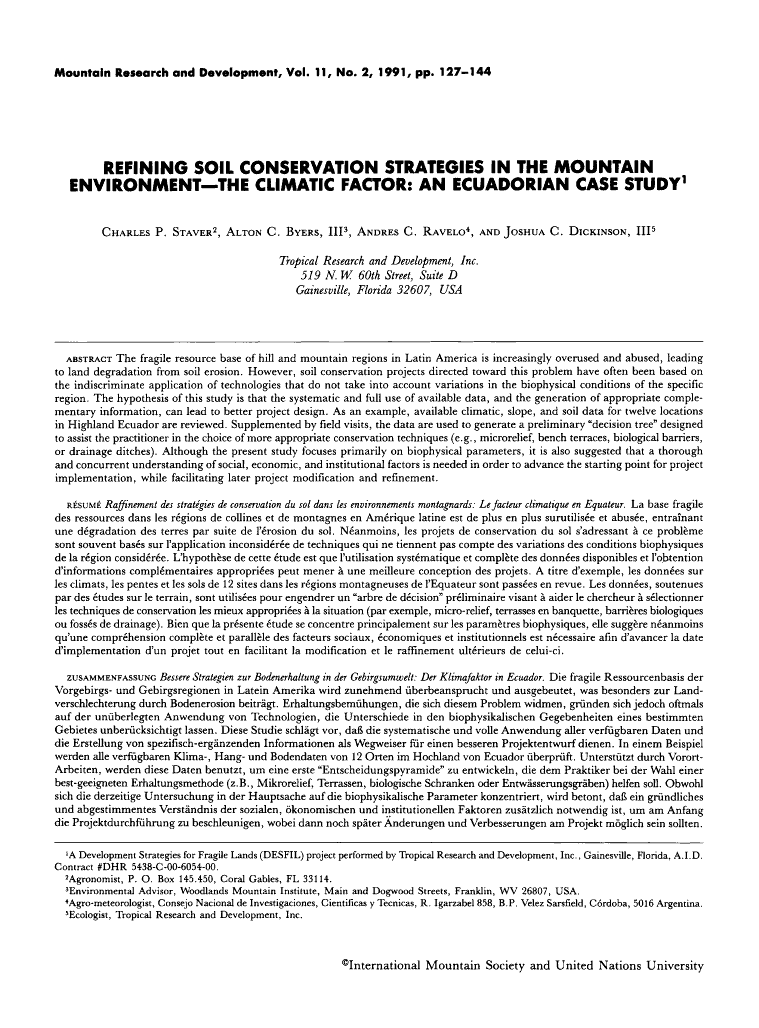
The fragile resource base of hill and mountain regions in Latin America is increasingly overused and abused, leading to land degradation from soil erosion. However, soil conservation projects directed toward this problem have often been based on the indiscriminate application of technologies that do not take into account variations in the biophysical conditions of the specific region. The hypothesis of this study is that the systematic and full use of available data, and the generation of appropriate complementary information, can lead to better project design. As an example, available climatic, slope, and soil data for twelve locations in Highland Ecuador are reviewed. Supplemented by field visits, the data are used to generate a preliminary "decision tree" designed to assist the practitioner in the choice of more appropriate conservation techniques (e.g., microrelief, bench terraces, biological barriers, or drainage ditches). Although the present study focuses primarily on biophysical parameters, it is also suggested that a thorough and concurrent understanding of social, economic, and institutional factors is needed in order to advance the starting point for project implementation, while facilitating later project modification and refinement.